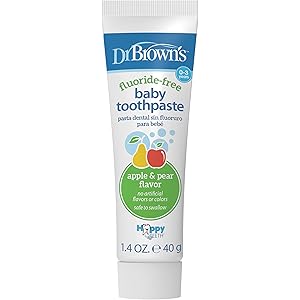GuruNanda Kids Toothbrush with Suction Cup & Fun Animal Designs - Soft Bristles for Healthy Gums- Non-Slippery & Mess-Free Toothbrush, 3+ Age- 4 Count
$2.99 (as of October 25, 2025 00:06 GMT +00:00 - More infoProduct prices and availability are accurate as of the date/time indicated and are subject to change. Any price and availability information displayed on [relevant Amazon Site(s), as applicable] at the time of purchase will apply to the purchase of this product.)Understanding Maternity Leave
Maternity leave is a crucial period for new mothers, allowing them to take time off work to care for their newborns. This leave can vary significantly depending on the country, employer policies, and individual circumstances. In the United States, maternity leave is often confused with the Family and Medical Leave Act (FMLA), leading to questions about their similarities and differences.
What is FMLA?
The Family and Medical Leave Act (FMLA) is a federal law that provides eligible employees with the right to take unpaid, job-protected leave for specific family and medical reasons. This includes the birth of a child, adoption, or foster care placement, as well as serious health conditions affecting the employee or their family members. FMLA ensures that employees can return to their same or equivalent job after their leave.
Is Maternity Leave the Same as FMLA?
While maternity leave and FMLA both provide time off for new parents, they are not the same. Maternity leave is specifically designed for mothers who have given birth, while FMLA covers a broader range of family and medical situations. Maternity leave can be paid or unpaid, depending on the employer’s policies, whereas FMLA is typically unpaid.
Duration of Maternity Leave vs. FMLA
The duration of maternity leave can vary widely. Some employers offer several weeks of paid maternity leave, while others may provide only unpaid leave. Under FMLA, eligible employees are entitled to up to 12 weeks of unpaid leave within a 12-month period. This means that maternity leave can be taken in conjunction with FMLA leave, but they are distinct entitlements.
Eligibility for Maternity Leave and FMLA
Eligibility for maternity leave often depends on the employer’s policies and the employee’s length of service. In contrast, FMLA has specific eligibility criteria, including working for a covered employer for at least 12 months and having worked at least 1,250 hours in the past year. Understanding these requirements is essential for new parents planning their leave.
Paid vs. Unpaid Leave
One of the significant differences between maternity leave and FMLA is the pay status during the leave. Many companies offer paid maternity leave, which can provide financial support during this critical time. On the other hand, FMLA does not mandate paid leave; it only guarantees job protection, meaning employees may need to rely on savings or short-term disability benefits during their time off.
State-Specific Maternity Leave Laws
In addition to federal laws like FMLA, some states have enacted their own maternity leave laws that may provide additional benefits. These state-specific laws can offer longer leave periods, paid leave options, or expanded eligibility criteria. It’s essential for employees to be aware of both federal and state regulations to fully understand their rights.
Job Protection Under FMLA and Maternity Leave
Both maternity leave and FMLA provide job protection, ensuring that employees can return to their positions after their leave. However, the specifics can vary. Under FMLA, employees are guaranteed the same or equivalent job upon their return. Maternity leave policies may differ by employer, so it’s crucial to review the company’s specific guidelines.
Planning for Maternity Leave
Planning for maternity leave involves understanding both maternity leave policies and FMLA rights. Expecting mothers should communicate with their employers early in their pregnancy to discuss leave options, eligibility, and any necessary paperwork. This proactive approach can help ensure a smoother transition into and out of maternity leave.
Conclusion: Navigating Maternity Leave and FMLA
Navigating the complexities of maternity leave and FMLA can be challenging for new parents. By understanding the differences and similarities between these two types of leave, employees can make informed decisions about their time off. It’s essential to consult with human resources and review company policies to ensure that all rights and benefits are fully utilized.


